|
| |
|
Crystalline System: cubic. |
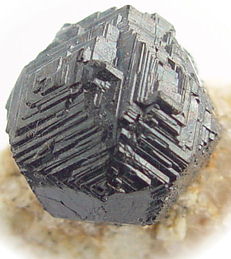 |
|
|
|
|
| Red
- violetish: |
Hardness |
Density |
Ref.Index |
| Pyrope
Mg3Al2Si3O12 |
7,25 |
3,58
g / cm3 |
1,714 |
| Almandine
Fe3Al2Si3O12 |
7,50 |
4,32 |
1,830 |
| Rhodolite
Mg,Fe3Al2SiO12 |
7,25 |
3,78
- 3,90 |
1,74-1,78 |
|
|
|
|
| Orange
- yellow-brown : |
|
|
|
| Spessartite
Mn3Al2Si3O12 |
7,25 |
4,20
- 4,25 |
1,78
- 1,81 |
| Malaya
Mn3Al2(SiO4)3 |
7,25 |
3,74
- 4,00 |
1,78 |
| Hessonite
Ca3Al2(SiO4)3 |
7,25 |
3,58
- 3,65 |
1,73
- 1,74 |
|
|
|
|
| Green
:
|
|
|
|
| Tsavolite
Ca3Al2(SiO4)3 |
7,25 |
3,60
- 3,68 |
1,73
- 1,74 |
| Uvarovite
Ca3Cr2Si3O12 |
7,50 |
3,85 |
1,87 |
| Dementoïde
Ca3F2SiO12 |
6,5
- 7 |
3,82
- 3,85 |
1,89 |
| In
a perfect crystal, when a face appears in the crystal in the process of
growth, all the faces appear with |
|
| the same
development. |
|
| If
one of the symmetrical faces is less developed on a crystalline sample, or
exceptionally does not |
|
| appear, that
comes
from the accidental actions of the external environment which opposed its
growth. |

 |
| Temperature,
pressure, nature of the mineral solution, speed of the crystalline growth
and the direction of |
| the
movement
of solution etc... represent the external influences on the crystalline
forms. |
|
| The
frequency of the faces of the crystals is related to the reticular
density, the fast growth of some faces |
|
| influences
the crystalline form definitively. |
|
| Garnet
thus crystallizes under the cubic system, whose crystals are characterized
by the presence of |
|
| three
quaternary
axes A4 joining the centers of the faces, four ternary axes A3 joining the
opposed tops, |
|
| six binary
axes
A2 joining the mediums of the edges. |
|
|
|
| |
|
| ·
One
of the causes modifying the initial form of crystals is truncation. |
|
|
Truncation on corners. |
|
|
|
|
|
|
|
|
 |
 |
 |
 |
| Cube |
|
|
Dodecahedron |
|
|
|
|
|
|
| Truncation cuts two different lengths on
adjacent corners. |
|
|
 |
 |
 |
| Cube |
|
Tetrahexahedron |
|
|
|
|
| Truncation cutting three equal lengths out of the three
adjacent corners. |
|
|
 |
 |
 |
 |
| Cube |
|
|
Octahedron |
|
|
|
|
|
|
|
|
|
|
|
|
|
| Truncation cuts two equal lengths out of two
corners and a larger
length on the third. |
|
|
|
|
 |
 |
 |
| Trisoctahedron |
|
Octahedron |
|
|
|
|
|
|
|
|
|
|
|
|
|
|
|
|
|
|
|
|
|
|
|
|
| Truncation on the segment crosses, two equal lengths
out of two corners, a smaller length on the third. |
|
|
|
|
 |
 |
 |
| Cube |
|
Trapesohedron |
|
|
|
|
|
|
|
|
|
|
|
|
|
|
|
 |
 |
 |
| Octahedron |
|
Trapesohedron |
|
|
|
|
|
|
|
|
|
|
|
|
|
|
|
 |
 |
 |
| Dodecahedron |
|
Trapesohedron |
|
|
|
|
|
|
|
|
|
|
|
|
|
|
|
 |
 |
 |
| Hexoctahedron |
|
Dodecahedron |
|
|
|
|
|
|
|
|
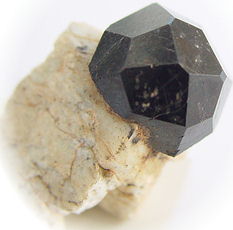 |
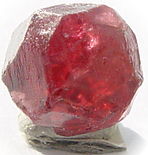 |
 |
| Almandine
in matrix |
Pyrope-Almandine |
Almandine
in matrix |
|
|
|
|
|
|
|
|
|
|
|
|
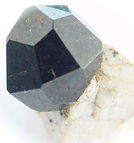 |
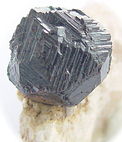 |
 |
| Almandine
in matrix |
Almandine
in matrix |
Rhodolite
(Ambohitompoina) |
|
|
|
|
|
|
|
| |
| There is also a law
according to which certain crystals do not present modifications that on
half of corners, |
| or of the
similar angles. |
| Here
is a truncation on a top cutting
three different lengths on corners, and which repeats only three |
| times
around the ternary axis. |
 |
 |
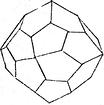 |
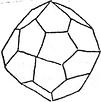 |
| Cube
and diplohedron |
Diplohedron |
Right
Gyrohedron |
Left
Gyrohedron |
|
|
|
|
| The diplohedron is made of twenty-four irregular
quadrilaterals. The class plagiohedron whose faces (HKL) |
| are
arranged in
the spiral order. |
| In
other cases, twelve irregular pentagons are formed by a truncation on one
sharp angle, on both adjacent |
| angles, the unequal
lengths, it is the pentagonal dodecahedron. |
|
|
 |
 |
 |
 |
|
Positiv |
Négativ |
|
|
|
|
|
|
|
|
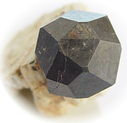 |
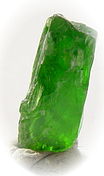 |
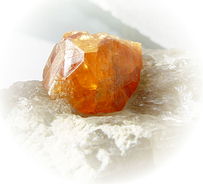 |
| Almandine
in matrix |
Tsavolite
(Madagascar) |
Spessartite
in pegmatite |
|
|
(Tsilaizina) |
| |
|
|
| The regular tetrahedron
consisted four equilateral triangles forming between them an angle of 70°
31. |
 |
 |
 |
| Positiv
tetrahedron
|
Négativ
tetrahedron
|
Octahedron |
|
|
|
 |
 |
 |
| Positiv
tetrahedron
|
|
Cube |
|
|
|
|
|
|
|
|
|
|
|
|
| The
tetrahedron or triakistetrahedron consisted twelve faces which are
isosceles triangles, and the |
| hexatetrahedron with
its
twenty four triangular faces. |
 |
 |
| Triakistetrahedron |
Hexakistetrahedron |
|
|
| |
| The trapezoidal dodecahedron consisted twelve
quadrilaterals deltoïde and the tetrahedral pentagonal |
| dodecahedron are
formed by a truncation appearing on each top and cutting three different
lengths on |
| angle. |
|
|
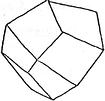 |
 |
 |
 |
| |
right |
left |
|
| Deltoïde
dodecahedron |
Pentagonal
tetraedrical dodecahedron
. |
Almandine
in matrix
|
|
|
|
|
|
|
|
|
|
|
|
|
|
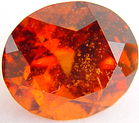 |
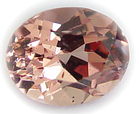 |
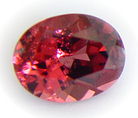 |
|
|
|
| Spessartite
(Ambohimarangitra) |
Malaya
(Andoharano) |
Malaya
(Madagascar) |
|
|
|
|
|
|
|
|
|
|
|
|
|
|
|
 |
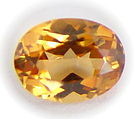 |
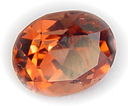 |
| Rhodolite
(Ankilytokana) |
Hessonite
(Soakibany) |
Imperial
Malaya (Madagascar) |
|
|
|
|
|
|
|
|
|
|
|
|
|
|
|
| In Madagascar, one finds rhodolite
in a gneiss rich in biotite, in which (almandite-pyrope) is presented in |
| the form of small
grains, or with the state of large porphyroblasts, generally deprived of
geometrical |
| contours, plagioclase(oligoclase
with andesine) is the feldspar dominating and sometimes exclusive. |
|
These gneisses contain sometimes pegmatic
beds very rich in crystals. |
| One very finds
also garnetiferous gneisses containing little biotite, hardly directed. |
| Kinzigites. The gneisses which have been just enumerated have a very clear
schistous structure, which |
| had with the biotite abundance. A rather
frequent type is approximately blocks and presents a compact |
| aspect,
thanks to the prevalence of large garnets without geometrical form,
associated quartz and feldspar |
| granoblastic, biotite is not very abundant.
The structure points out that of corneal micaceous of contact of |
| the
granite. This gneiss can be compared with the kinzigite
of the Black Forest. |
|
| Leptynites with amphibolo-pyroxenite intercalation rich in garnets of a
pale pink (almandite-pyrope), with |
| often rutile and graphite abound
in certain areas of Madagascar. The feldspar is orthoclase, associated |
|
with ogigoclase-albite feldspar and sometimes
with spindle-shaped microperthite, there exists much of myrmekite. |
| These rocks are with
fine grins, but they very often contain large regularly distributed crystals. |
|
Usually garnet does not have a geometrical form, but it takes clear faces
in more quartzose zones. |
| Leptynites derive from the granites by
disappearance of the mica; the garnetiferous mica schists |
| constitute the
opposed pole in which biotite prevails, with progressive disappearance of
feldspar. |
|
|
| |
|
|
|
|
|
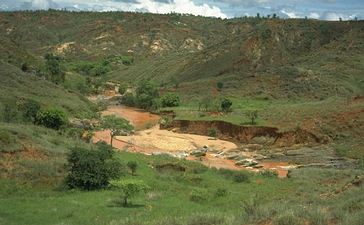 |
|
|
The Besafotra river
carry the |
|
spessartites onseveral
kilometers |
|
from their source, doubtless
a |
|
sodolitic pegmatite. A walk of
25 |
|
kilometres among the mountains is |
| necessary to reach this place. |
| |
|
|
|
|
|
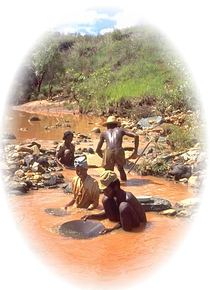 |
|
|
| |
|
| |
|
| The tanety "grounds bordering
the river," are also |
|
| the object of the orange
garnet's fever. |
|
| |
|
|
|
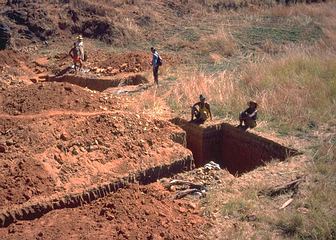 |
|
|
|
|
|
|
|
|
|
|
|
Sifting in river. |
|
Initially, the spessartite appeared in |
|
the Besafotra
river, searched out |
|
here near to its source. |
|
|
|
|
|
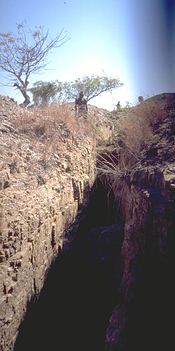 |
|
|
|
Ankilytokana, one of the fabulous rhodolite
deposit |
|
exploited
in a leptynite
vein on a sixteen |
|
meters depth. |
|
|
|
Leptynites
are primarily consisted in alkaline feldspars |
|
and
quartz. When these rocks are not ribboned, and |
|
that
is
frequent, it is often difficult to decide if a |
|
sample,
not
seen in place, belongs to a leptynite or an |
|
aplite, it
should
be noticed that in Madagascar, these |
|
last
contain
microcline and not of orthoclase. In this |
|
area,
one
observes graphite spangles in the leptynites.
|
|
|
|
|
|
|
|
|
|
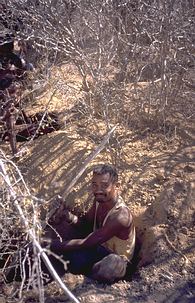 |
|
|
|
|
|
| |
|
| |
|
| Malaya
garnet discovered into |
|
| September
1998, in eluvium in |
|
| a
broken up leptynite. |
|
| The
modest depth of the deposit |
|
| did
not
require
a significant work |
|
| to
extract
it. |
|
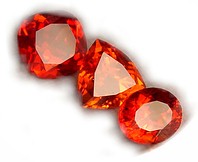 |
|
|
|
|
|
|
|
|
This
stone shows an exceptional capacity to restore |
|
the light,
thanks in
particular to its high refractive
|
|
index, especially under
not very enlightened condition. |
|
|
|
 All
of
the pictures on this site have been shot by Darbel du Bourg.
All
of
the pictures on this site have been shot by Darbel du Bourg. |
©
1987 - 2009 Darbel du Bourg. All rights reserved. Alain
Darbellay

|